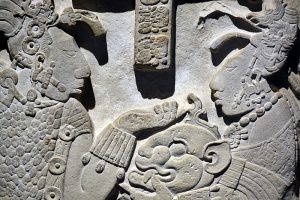30 August 2016
The demise of the Maya civilization: water shortage can destroy cultures
Posted by bbane
By Florian Aigner
Something really drastic must have happened to the ancient Maya at the end of the Classic Period in the 9th Century. Within a short period of time, this advanced civilization in Central America went from flourishing to collapsing – the population dwindling rapidly and monumental stone structures, like the ones built at Yucatán, were no longer being constructed. The reason for this demise remains the subject of debate even today. Now, researchers at the Vienna University of Technology (TU Wien) may have found the explanation: the irrigation technology that served the Mayans well during periods of drought may have actually made their society more vulnerable to major catastrophes, according to a new study published in Water Resources Research, a journal of the American Geophysical Union.
The lessons learned may also help us to draw important conclusions for our own future. We need to be careful with our natural resources – if technical measures simply deal with the shortage of resources on a superficial level and we do not adjust our own behavior, society is left vulnerable, according to the study authors.
Socio-hydrology
“Water influences society and society influences water,” said Linda Kuil, a PhD student at TU Wien and lead author of the new study. “The water supply determines how much food is available, so in turn affects the growth of the population. Conversely, population increases may interfere with the natural water cycle through the construction of reservoirs, for example.”
Because water and society have such a direct influence on each other, it will not suffice to describe them by separate models. This is why researchers at TU Wien explore the interactions between sociology and hydrology and represent them by coupled mathematical models. The emerging field of socio-hydrology establishes mathematical interrelationships, such as those between food availability and birth rate, or between recent water shortages that are still fresh in our memories and society’s plans for building water reservoirs. These kinds of interrelationships, combined with a large amount of historical and current data, ultimately yield a complex system that produces different scenarios of human–nature interactions, according to the study authors.
The water reservoir: a blessing and a curse
“It’s well-known that the Mayans built water reservoirs in preparation for dry spells,” Kuil said. “With our model, we can now analyze the effects of the Mayans’ water engineering on their society. It is also possible to simulate scenarios with and without water reservoirs and compare the consequences of such decisions.”
As it turns out, water reservoirs can actually provide substantial relief during short periods of drought. In the simulations without reservoirs, the Mayan population declines after a drought, whereas it continues to grow if reservoirs provide extra water. However, the reservoirs may also make the population more vulnerable during prolonged dry spells. The water management behavior may remain the same, and the water demand per person does not decrease, but the population continues to grow. This may then prove fatal if another drought occurs resulting in a decline in population that is more dramatic than without reservoirs.
Sustainable use of resources
We will probably never know all the reasons for the decline of the Mayans. After all, wars or epidemics may have played their part too. The socio-hydrological model developed by the TU Wien researchers does, however, tell us that droughts and water issues are one possible explanation for their demise and shows us just how vulnerable an engineered society can be.
“When it comes to scarce resources, the simplest solution might turn out not to superficial and not always the best one,” Kuil said. “You have to change people’s behavior, reassess society’s dependency on this resource and reduce consumption – otherwise society may in fact be more vulnerable to catastrophes rather than safer, despite clever technical solutions.”
-Florian Aigner is a science communicator and editor at TU Wien. This post originally appeared as a press release on the TU Wien website.



 GeoSpace is a blog on Earth and space science, managed by AGU’s Public Information staff. The blog features posts by AGU writers and guest contributors on all sorts of relevant science topics, but with a focus on new research and geo and space sciences-related stories that are currently in the news.
GeoSpace is a blog on Earth and space science, managed by AGU’s Public Information staff. The blog features posts by AGU writers and guest contributors on all sorts of relevant science topics, but with a focus on new research and geo and space sciences-related stories that are currently in the news.